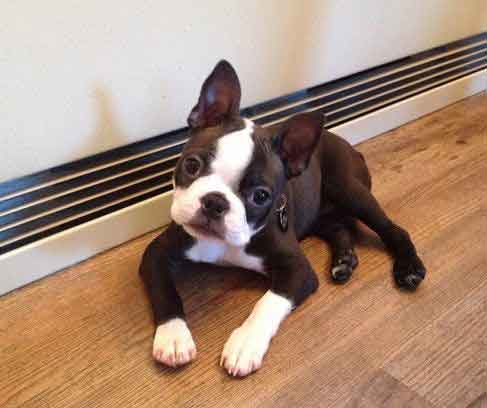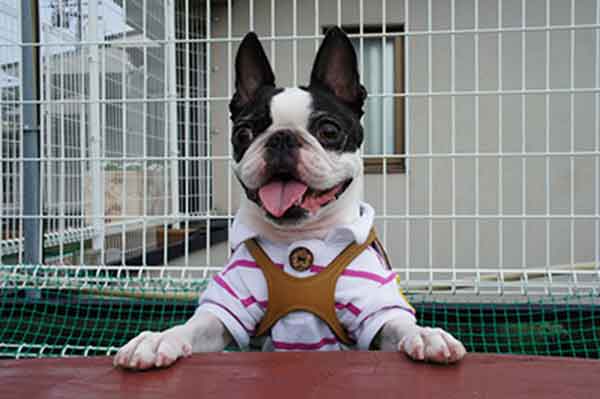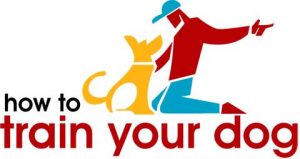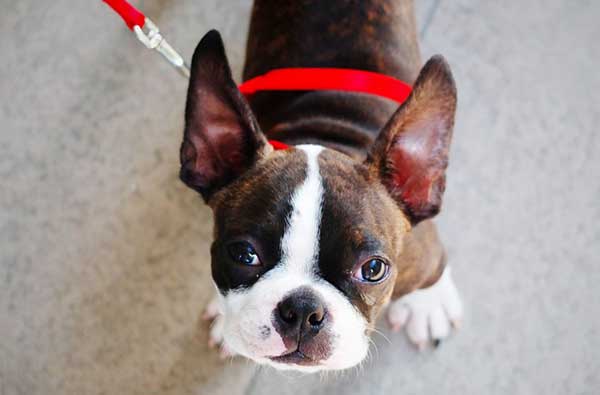Boston terriers are a popular family dogs known for their larger than life personalities. There is a lot of love and a lot of energy in these dogs and they are the pet that just keeps on giving. Of course it doesn’t hurt that these dogs are also very attractive and generally easy to look after.
There is a lot to love with this dog. However, there are still questions over their trainability because of these personalities.
Bostons are called the American Gentleman, largely due to their black and white markings and smart coat. Still, newcomers to the breed will wonder how much of a gentleman are they really? The big question therefore is simple. Is it really that difficult to succeed with Boston Terrier training, or have these dogs evolved new traits with the companionship role?
In this Boston Terrier training guide we will look at some of the key issues that new owners have to contend with when training a puppy Boston in its new home.
There are some of the more obvious issues to look at, such as Boston Terrier potty training and obedience. Yet, there are are other issues to consider that are specific to this breed and may make them more of a handful than some expect. This includes jumping, digging and issues with socialization.
We will also look at some of the misconceptions surrounding training problems and aggression and the different aids available. This relates to both the training aids used by owners and the guides and services that can help.
There is a lot to learn about raising a Boston Terrier, but things should be a little clearer by the end of this guide.

Table of Contents
Are Boston Terriers aggressive dogs due to their ancestry? If so, should owners worry about them biting?
There are some potential Boston owners that will be concerned about the risk of aggression with these dogs because they were originally bred as fighting dogs.
It is said that coachmen of wealthy American families in the 1800s created the breed through a cross of the English Bulldog and English White Terrier purely for dog fighting. They certainly have the build for it.
However, we cannot get caught up on these preconceptions. That is where things have gone so wrong for Pitbulls and Staffies. These dogs were raised for similar means and aggressive work, yet are proven to be great family pet with he right training and approach.
While it is true that some male Bostons do show these genes a little when confronted with another male dog on their patch, it is generally all for show. They may try and make themselves look big and be a bit unfriendly, but they are unlikely to resort to aggression. This means that there are few concerns about a Boston Terrier biting – either another dog or human – unless it feels particularly threatened.

In addition to this it important to remember that many guides will highlight the potential of these little companion dogs as guard dogs. This is due to their ancestry and the terrier spirit that comes out while trying to defend their master and territory. This leads to questions over Boston Terrier barking. Do Boston Terriers bark a lot?
Actually, there is surprisingly little noise from these little dogs for such an outgoing, protective breed. They will bark when appropriate, when under threat or if it feels it its helping its pack, but it isn’t that vocal generally. Some will see the words companion dog and the small size and assume that this pup is another yappy breed that is hard to train to keep quiet. This is not true at all.
In fact, the opposite is true and they are good-natured dogs that can get along with anyone, with the right approach.
If these Pets are such a friendly, fun loving dogs, are Boston Terriers good with other dogs and are Boston Terriers good with kids?
Both are important considerations with these smaller terrier breeds.
However these dogs are pretty good around people, strangers, children, cats and other dogs. They may get a little wary of some, but they will quickly warm to those that prove to be friendly and are happy to have someone new to play with.
The potential downside here is that friendliness can overreach into excitability. This desire to be friends with everyone and play can lead to a personality that is a little hyper and hard to handle. This is where we begin to see some of the possible Boston Terrier behavior issues. There is the potential for these dogs jumping up a lot on other people in order to gain attention, and this is just the start of the training needs.
This personality type is why so many Boston Terrier owners advocate the positive reinforcement approach to dog training.
The willingness to please and play, and the stubbornness, mean that they do not respond well to negative approaches and punishment. A scolded dog may withdraw and not attempt to do anything else. A dog praised for progress will try and continue that behavior for more treat and affection. This can all be achieved with the right words of praise, some tasty morsels of treats for a job well done or time with a toy. Also, many respond well to clicker training.

This sounds like they can be quite a handful, so what does this mean for Boston Terrier trainability?
Despite all of the concerns above in terms of the behavior of the dog, many of these pups can be pretty easy to train.
They are mostly good with the basic commands with the right approach, although there is a tendency towards stubbornness. They are also more intelligent that a lot of new owners first assume.
This intelligence means that it is important to mentally challenge a Boston as much as possible. They need to be kept active with puzzles and game and given new things to do. Where possible, this should be incorporated into the training program. Think of this as applied learning where they put newly-learned skills to the test. Still, it is also important not to push them into something they don’t want to do or are not ready for.
The first place to start with these Boston Terrier puppy training tips is obedience and bond building
Obedience commands are the best place to start to gain that rapport with the dog and ensure they know who is the boss. This means learning how to train Boston Terrier to sit and how to train Boston Terrier to lay down. It is important to remember to stay consistent in terms of the tone and commands, but you should also consider some inconsistency in the treats and rewards to keep them interested.
Also, remember to increase the rewards for higher difficulties. Raise the pressure each time to test these intelligent dogs and don’t let them become complacent. If they have mastered the art of sitting, lying down and rolling over in the living room, what happens in the park with all the distractions to deal with?
These basic obedience commands are a must for any Boston Terrier owner because they provide basic cues in many situations. Getting an unruly, over-eager dog to sit will calm them down and put them in a place to be corrected or praised. Establishing this master-dog relationship builds trust and understanding so that you can continue a strong relationship and handle new experiences.
For some this will lead to obedience demonstrations and agility training. This may come as a surprise with these small companion dogs. Agility trails tend to be the domain of the much smarter dogs around, such as the collies and GSDs. However, the desire to learn and play means that an obstacle course becomes a great playground. This is great mental stimulation and a great way of testing out that bond, perhaps even in a competitive situation.

Start socialization training from a young age to get the best out of them
All dog training guides will talk about the importance of socialization in some form, this is how we ensure that are puppies get to know the world around them and learn how to interact with what they find. The more people they meet, the more they will recognize them and learn who is a friend to play with and who doesn’t want to be a part of the game. This is essential for those with young children in the home where both child and dog need to learn how to play nicely.
With time great relationships can form and the dogs become calmer, better natured animals that can be trusted out in public. The earlier owners start, they easier it is for the dog. It also helps to build up to bigger, more interesting areas with more to learn. Start with bringing people and dogs to the home and work up to trips in the dog park.
On a related note, this is an important time to work on leash training
There is a good chance that you will notice your Boston Terrier pulling on the leash to interact with all those around it. This is a simple reaction. They want to run ahead to great people, see other dogs, smell things, play in dirt and so much in this new area. ‘
However, they need to be trained to walk nicely alongside and know when it is appropriate to start running around. At the same time, it is also important to learn how to train Boston Terrier to come.
Leash training works on some of the same principles as other training techniques here. They need to be encouraged not to pull and run ahead, perhaps by stopping and denying them the attention they crave. When they calm down and come back, reward them with treats and praise for good behavior.
They will soon learn the best way to walk to get what they want. Another factor to consider when learning how to train Boston Terrier to walk on leash is the type of leash and the use of a harness.
Many owners suggest using a harness because it is easier for controlling the dog, but it is also safer too. Owners of short-snouted breeds, those with potential problems with their airways, need to be careful with collars that might damage the throat area. As for the leash, retractable leashes could give these dogs a little too much freedom to run away and limit control.
Training a Boston terrier to respect boundaries and stop digging
The curious nature, energy and stubbornness of a Boston Terrier have their pros and cons, as has already been seen with the behavior issues above. If something attracts their attention, they will go after it to see if it holds any interest. If they feel bored, they will find ways to entertain themselves. This is great, ans somewhat amusing, in many situations.
However, owners have to consider the risks of leaving Bostons unattended at home. These dogs can be left for short periods with the right training. However, some pups may decide to explore and dig. This can be an issue if precautions are not made.
Best case scenario: they go out and dig around in the dirt and make a big of a mess.
Worst case scenario: they go wandering off on an adventure past the boundaries of the home.
There are two issues to contend with here, so two separate training strategies to deal with.
Training a Boston not to dig can be tricky unless they are caught in the act. They need to understand that this is bad behavior that won’t be tolerated. Positive reinforcement means treats and praise when they stop and move away from the area. Still, it is easier to avoid the issue of digging altogether by ensuring that they are not bored.
Mental stimulation through toys and games within the home means that they are less likely to want to amuse themselves in this manner. As for the issue of digging under boundaries and trying to escape the garden to explore, a training collar may be of use here.
Look out for models with a collar that is the right size and style for a small Boston Terrier. Static shocks may not go down to well with this breed, but there are citronella sprays that could work. Make sure to look for those with automatic sensors at boundary limits if they are to be used when you are away.
House training a Boston terrier
One of the reasons that many people are keen to own a Boston Terrier is because they are seen as such adaptable apartment dogs.
While they are full of energy, their size and demeanor means that they can suit apartment living too. That is as long as owners make sure to give them plenty of exercise and mental stimulation throughout the day.
The trouble is that we then come to the issue of housebreaking a puppy. When most guides tell Boston pup owners to take them outside 15 minutes after a meal, or just after a nap, to avoid accidents, this is easier said than done with apartment living. You can’t really pop into a communal garden from the 10th floor after a nap and risk them evacuating in the hall or lift. So what is the answer here?
House training a Boston Terrier puppy doesn’t have to be that difficult as long as owners pay attention to the details, buy all the right products and stick with it. House training is recommended with a crate and some puppy pads.
Create a safe area of the home that is theirs to use when needed and that remains consistent. With time and encouragement, they will go there on their own. Take the time to take pups to the area when it’s usually time for them to go, and reward them for good behaviors.
As soon as they begin to associate the behavior and area with reward, they will go of their own accord. Eventually, it will become second nature.
What help is out there for Boston terrier owners struggling with training issues? Should owners look at Boston Terrier obedience schools or training guides?
One option for those that struggle to learn how to train Boston Terrier puppies is to enroll in an obedience class when they are old enough to handle it.
There are pros and cons here. A good school with a good trainer can help you to correct problem in communication and commands you didn’t know where there. They are also a good way to help Bostons interact with new people and animals. The problem is that their energetic, friendly nature could get the better of them. There may be too many distractions for them to focus properly. Those that hold off on obedience training here until the pup is older may lose out on precious time. Also, the stubbornness of the dog and their sensitivity may been that they fall behind with the class. This can be demoralizing, even if the pup isn’t actually doing anything wrong.

Training guides
The alternative option here is to look into one of the many online guides that are available on how to train a Boston Terrier.
One of the best is Doggy Dan the online dog trainer because while his work is not solely focused on a Boston Terrier, it comes from someone that is experienced in dog behavior and psychology, to the point where there many varied tips on a range of subjects. Those that focus on the Boston can often do so from a personal perspective of their own pup, not a more scientific one. This breadth of knowledge and guides within the course is essential because of the range of issues that Bostons can face.
As this information has shown so far, there are many potential problems that owners can face with a Boston puppy. However, none are guaranteed, neither is the intensity of the issue. One owner could have a great rapport for general obedience but find that house breaking and leash training takes a little longer. Others may take longer on general obedience because of the stubborn nature, then find that additional problem are less problematic after that eventual breakthrough.
This is why Training courses like this are so helpful. Owners that see their pups as individuals and work on a customized plan can often do better. This is easily achieved via Doggy Dan because of the step-by-step nature and the encouragement that users can work when and where they choose.
What have we learned about Boston Terrier puppy training: the good and the bad
As you can see from all of the Boston Terrier training information provided so far, there are lots of different issues to think about.
There are plenty of areas where owners have to put the work in to get good results, such as socialisation and obedience to keep them people friendly, dog friendly and stop them jumping. There is also the need to keep them under control on the leash and secure boundaries. Then there is the all-important issues of housebreaking. There is a lot to do here, but this is the price to pay for having such a high-spirited, outgoing dog that is a joy to have in the home. Without this consistent training and desire to improve their behaviour, an excitable personality and boredom can take control, with unfortunate consequences.
Despite the potential negative aspects to Boston Terrier training, there are also plenty of positive points to remember when considering purchasing one of these pups.
When owners bypass the stubborn streak and develop a good bond through positive reinforcement and good training methods, it is just a case of working on each problem as it comes. The fact that this is a loving, keen-to-please, intelligent dog that likes to play can all work in your favor.
In the end, most of these dogs do earn that American Gentleman nickname, but only if they are given the right training. It is a title the two of you will have to earn together through hard work and perseverance.





